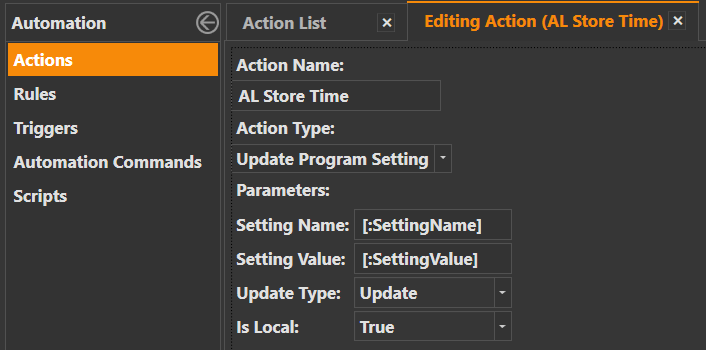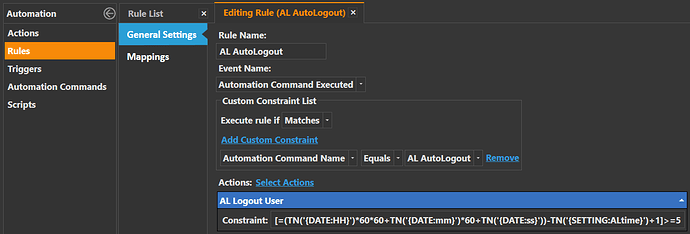Here is a Resetting Timer. In addition to the 2 Actions posted previously, add another one …
Action - Update Program Setting - AL Store Time
Add a new Rule …
Rule - Application Screen Changed - AL Screen Change
AL Store Time
Constraint: (none)
SettingName: ALtime
SettingValue: [=TN('{DATE:HH}')*60*60+TN('{DATE:mm}')*60+TN('{DATE:ss}')]
AL Execute Automation Command
Constraint: '[:CurrentScreen]'!='Management' && '[:CurrentScreen]'!='LoginScreen'
AMCname: AL AutoLogout
delayseconds: 5
Modify the Rule AL AutoLogout to add this Constraint to the Rule:
[=(TN('{DATE:HH}')*60*60+TN('{DATE:mm}')*60+TN('{DATE:ss}'))-TN('{SETTING:ALtime}')+1] *Greater* 5
Or, this Constraint to the Action called AL Logout User:
[=(TN('{DATE:HH}')*60*60+TN('{DATE:mm}')*60+TN('{DATE:ss}'))-TN('{SETTING:ALtime}')] >= 5



